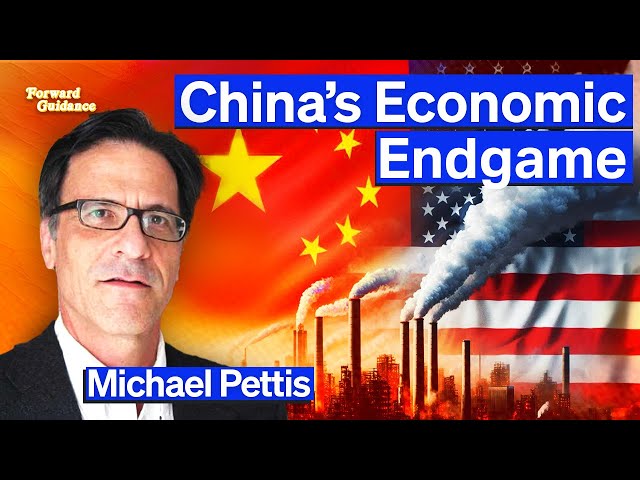Research Summary
The report provides an in-depth analysis of the global tungsten market, highlighting its supply and demand dynamics, key producers, and potential future trends. It emphasizes the increasing demand for tungsten from the military, semiconductors/robotics, and electric vehicles (EVs) sectors, and the potential supply constraints due to resource nationalism and lack of new supply. The report also presents a case study of Almonty Industries, a tungsten mining company.
Key Takeaways
Tungsten Market Overview
- Market Characteristics: Tungsten is described as the smallest and most opaque commodity market, with a global supply of approximately 106,000 tons. The market is not widely discussed on social media or financial analysis sites, indicating low public interest or awareness.
- Supply and Demand Dynamics: Tungsten is at a potential turning point with increasing demand from EVs/electrification, semiconductors/robotics, and military sectors, which could lead to a supply/demand imbalance. The threat of Resource Nationalism could potentially disrupt over 80% of the global tungsten supply.
- Historical and Industrial Use: Tungsten’s history dates back to its discovery in 1783, with industrial use expanding after Robert Oxland’s patent in 1855-1857 for making tungsten steel. Tungsten carbide, developed by Osram in the 1920s, is the second-hardest metal on earth, making it suitable for various applications.
Global Tungsten Production
- Top Producers: China, Vietnam, and Russia are the top three tungsten-producing countries, contributing approximately 93% of the global primary supply. The concentration of tungsten production in these countries raises concerns about “Conflict Mineral” risks due to non-transparent supply chains.
- US Tungsten Production: The United States has not reported primary tungsten production since 2015, with only six companies capable of converting tungsten raw materials into usable forms. The US is facing a potential stockpile problem with critical minerals, particularly tungsten, due to underinvestment in domestic production and reliance on imports.
- Secondary Tungsten Supply: Secondary tungsten supply, which is difficult to track, consists of recycled scrap materials and government stockpiles, accounting for ~25-30% of the global supply or ~21,000 tons annually.
Tungsten Demand
- Primary Use-Case Themes: The report emphasizes three primary use-case themes for tungsten: military applications, semiconductors/robotics, and electric vehicles (EVs), all of which are sectors with growing demand in a supply-constrained market.
- Military Demand: Military applications currently account for approximately 10% of global tungsten demand, translating to 8,410 tons. Historical data shows tungsten prices can surge dramatically during wartime, highlighting the metal’s strategic importance and potential for price volatility.
- Semiconductors and Robotics Demand: In the field of semiconductors and robotics, tungsten is favored for its high melting point, making it ideal for the EDM process in heavy equipment manufacturing and for semiconductor fabricators who use tungsten hexafluoride gas to enhance chip conductivity and heat insulation.
- EV Demand: EVs account for approximately 30% of global tungsten demand, which is about 25,200 tons. A shift in tungsten use per vehicle could add an extra 17,000 tons of demand.
Almonty Industries Case Study
- Company Overview: Almonty Industries (AII) is a tungsten mining company with a market cap of $85M and an enterprise value (EV) of $158M, featuring one producing mine, two projects, one mine on care and maintenance, and another under construction.
- Sangdong Mine: The Sangdong mine in South Korea, owned by AII, is the world’s largest tungsten deposit by Inferred Resources, with 230,222 tons of contained WO3, and offers three times the average grade of Chinese deposits at nearly half the cash cost.
- Financial Outlook: AII’s feasibility study suggests that the Sangdong mine could generate a net cumulative $133M in after-tax cash flow, based on a tungsten price of $370/mtu, which is above the current price but within a plausible range considering potential supply/demand imbalances.
Actionable Insights
- Monitor Tungsten Market Dynamics: Investors should keep a close eye on the tungsten market, particularly the supply and demand dynamics, as the increasing demand from various sectors and potential supply constraints could lead to a supply/demand imbalance, impacting the price of tungsten.
- Research the Potential of Tungsten Producers: Given the potential supply/demand imbalance in the tungsten market, investors could consider researching companies involved in tungsten mining, such as Almonty Industries, to understand their potential in the market.
- Understand the Impact of Resource Nationalism: The threat of Resource Nationalism could potentially disrupt the global tungsten supply. Investors should understand the implications of this risk and how it could impact the tungsten market and the companies involved in it.
- Consider the Role of Tungsten in EVs and Semiconductors: With the growing demand for EVs and semiconductors, the role of tungsten in these sectors could become increasingly important. Investors should consider this trend when evaluating investment opportunities in these sectors.
- Assess the Impact of Military Demand: Given the strategic importance of tungsten in military applications, any increase in global conflicts could lead to a surge in tungsten demand and prices. Investors should assess this risk when considering investments related to tungsten.











